 With all the dreadful heat and humidity of late, my desire to “imbibe” has waned a little. For the past few days, water seems to be the big star in my glass. However, I did have a refreshing and perfectly chilled Sauvignon Blanc the other evening. 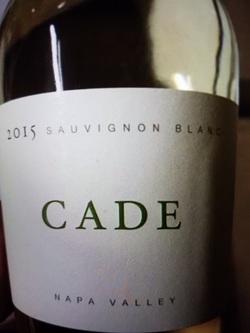 The 2015 CADE Sauvignon Blanc was a great choice for a balmy night. Made with 92% Sauvignon Blanc, 2.5% Sauvignon Musque 3% Sémillon, and 2.5% Vionier, it was just the right blend of grapes that added subtle layers to the wine. The color was so pale, it was almost clear. Delicious aromas of soft citrus, peach, lemon and honeydew segued onto the palate. The texture was creamy with some floral and apple thrown in. Hints of honeysuckle and lime lingered on the finish. This was a crisp and wonderfully layered wine! Alcohol 14.2% CADE is PlumJack’s sister winery, located high up on Howell Mountain in Napa Valley. The winery is at an elevation of 1800 feet and is considered one of the greenest wineries ever built.
http://www.cadewinery.com I have many bottles of wine to taste and review, but I’m waiting for a break in the weather, which will hopefully arrive towards the end of the weekend. Have a great Thursday! Stay cool! Cheers! Penina
0 Comments
My introduction to Donnafugata wine (owned and operated by the Rallo family) was this past February and it was a memorable one. Not only did I taste some delicious wines from Sicily, I also had the pleasure of meeting and lunching with Josè Rallo, one of the family members who is head of management control and communications manager. I encourage you to read my story about the family, their vineyards and wines at: http://thewineknitter.com/1/post/2016/02/day-431-donnafugata.html as a prelude to this post. Donnafugata recently sent me two bottles of wine from their “Fresh and Fruity” collection, SurSur 2015 and Sherazade 2015, representing Sicily’s indigenous grape varieties.  SurSur is made with 100% Grillo grape, an ancient indigenous variety from Sicily. Having tasted the 2014 vintage several months ago, I was looking forward to trying the 2015 vintage. The wine was beautifully balanced with a soft straw color. The nose offered citrus, grapefruit, floral and peach. The aromas carried over to the palate with stone fruit, most notably peach and hints of pear. It had a creamy mouthfeel with pleasant notes of floral and vanilla on the finish. SurSur is lovely served as an aperitif or with any summer meal. To quote Donnafugata, “a fresh and fruity Grillo with a youthful spirit”. Alcohol: 12.73% Price: $23.00 (SRP)  Sherazade 2015 is made with 100% Nero d’Avola, another indigenous grape that is also considered Sicily’s most important red wine grape. Nero d’Avola is named after the city of Avola which is located in the far south of Sicily and is referred to as “the black grape of Avola”. The color of the wine was dark ruby, bordering on purple. The aromas were a playful blend of dark berries, violets and a touch of candy apple. The palate was fruit forward offering red berries and cherries with pepper and spice on the finish. Soft tannins and a lush mouthfeel make this a perfect “go to” wine for light meals. Alcohol: 12.86% Price: $23.00 (SRP) Donnafugata’s wine labels are whimsical and always tell a story. Most of the artwork is created or inspired by Gabriella Rallo. Each label interprets the personality of the wine in addition to paying homage to art and literature. Sur Sur mean cricket which comes from the classical Arabic language once spoken in Italy. Crickets are good luck and are part of the sounds of spring and summer. The SurSur label shows Gabriella as a young girl running barefoot through “flowers and fresh grass” following the singing crickets. The Sherazade label represents the leading female character in The Arabian Nights. To quote Donnafugata “a fruity flesh voice, wrapped in a spicy drape, that tells you the fairy tale of this masterpiece of Oriental literature.” If you’re looking for authentic Sicilian flavors, pick up a few bottles of these wines to drink throughout the rest of the summer and into the fall. Serve as an aperitif or enjoy with most any meal! www.donnafugata.it
Cheers! Penina  Between work, company and tending to forgotten “to do” lists, the week got away from me. So it was nice to enjoy a “TGIF” get together with a friend at the end of the day. We were both feeling the need for a festive drink and decided to order Margaritas. Considering we were at an Italian restaurant, it might have been an odd drink to order. However, the bartender was a spot on mixologist. The drinks came to the table in large wine glasses…perfect! The drinks carried us through the appetizers and entrées. I never ordered any wine! We dined on bruschettaccio, Caesar salad and Pappardelle with shrimp and arugula in a light lemon broth. And yes, as strange as it may seem, the margaritas complemented our meal.  When I got home, there were some boxes of wine waiting at my front door for me to taste and review. I will have lots to share with you this coming week, starting with some delicious Sicilian wine. Until then… Have a great Saturday!
Cheers! Penina It’s hard to believe that we are already into the month of August. Clothing stores are displaying fall fashions and back to school supplies are occupying the shelves.  However, I am not ready to give up summer yet. I plan to swim, continue to grill food and enjoy summer quaffs for as long as I can! And fortunately, my friends are in agreement.  While visiting with a friend the other evening, we took advantage of the nice weather and sat outside and sipped a lovely rosé from Languedoc-Roussillon, France. The 2015 Château Tourril, Havana Minervois AOP rosé was a beautiful blend of 70% Cinsault and 30% Grenache. The color was pale salmon with subtle citrus aromas and fresh fruit. The palate offered strawberry, cherry and mild citrus notes. The finish was long with herbs and a hint of bitterness lingering. A very nice wine, indeed! Alcohol: 12.5% Price: about $13.00 Château Tourril is a family owned vineyard located between the Canal du Midi and the fortified city of Carcassonne. The small 13-hectare estate produces wine from its Syrah, Cinsault and 100 year old Carignan, Grenache and Roussanne vines. The entire production process is conducted at the Château, using sustainable agricultural techniques. http://www.chateautourril.fr Happy Wednesday!
Cheers! Penina  While perusing the shelves of a wine & spirit shop the other day, I stumbled across a bottle of vodka that intrigued me and I just had to buy it! I have tasted and reviewed many wines from New Zealand, but never their vodka. What drew my attention to this vodka is that it’s made with whey, which is rare. VDKA 6100 is made in Reporoa, located on the North Island of New Zealand. Fresh seasonal whey, sourced from grass-fed cow’s milk, is used and fermented with a rare strain of yeast imported from Ireland and now farmed in Reporoa. Due to the purity of the ingredients being whey and natural spring water, the vodka is only distilled three times. VDKA 6100 is backed by Robert De Niro and James Packer. The product was launched in early 2014. And according to VDKA 6100’s website, the name was chosen to reflect the distance between the birthplace of the brand in the USA and the source of the vodka in New Zealand, 6100 miles.
On the nose, the vodka is sweet with a hint of lemon and vanilla. The palate offers a very creamy mouth-feel with more vanilla, lemon and a touch of pepper. The creaminess fades on the finish with some spice and heat taking its place. This vodka is good served neat or in a cocktail. 80 proof Price: about $35.00 http://www.vdka6100.com Check out more vodka reviews on my website. Have a great Monday! Cheers! Penina Three words: Hungarian wines…delicious! When one thinks of wine, Hungarian wine might not be on your radar, but it should be! I recently attended a wine tasting & luncheon at Blaue Gans Restaurant in NYC. Monika Elling, CEO of Foundations Marketing Group, hosted the event and introduced us to Patricius Tokaj wines. Having never tasted Hungarian wine before, this was truly an eye and palate opener for me! 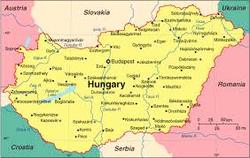 Before sharing my thoughts about these remarkable wines, I’ll begin with a very brief intro to Hungary. Hungary is a landlocked country located in Central Europe, bordered by seven other countries. Hungary is finally starting to build its wine reputation post-communist era, but the country is certainly no stranger to wine making and has been producing wine dating back to Roman times. I recently heard “Only three European languages have words for wine that are not derived from Latin: Greek, Turkish and Hungarian.” 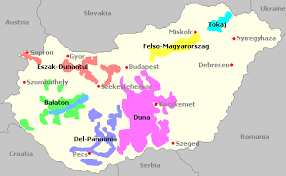 There are at least 22 official wine regions in Hungary, of which Tokaji wine region is the most famous. The regions are dispersed around the country and each region has its own unique terroir and style of wine. High mountains surround Hungary, but for the most part, it is a relatively flat country with rolling plains, hills and low mountains on the Slovakian border. 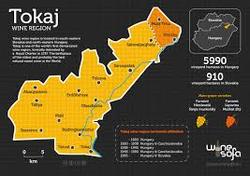 The Tokaji wine region rests on a small plateau near the Carpathian Mountains in the northeast corner of the country. Millions of years ago, a chain of volcanoes erupted along the country’s northern border, creating hills and soil of volcanic origin. Due to the protection of nearby mountains, this region has a distinctive climate, which in turn is beneficial to growing grapes. There are six officially approved grape varieties grown in this region. Furmint is the most famous and common grape grown in Hungary and accounts for about 70% of vines found in Tokaji. Other grapes found in this region are Hárslevelű, Yellow Muscat, Zéta and Kövérszőlő. Patricius Tokaj Winery, located in the Tokaji wine region, was established by the Kékessy family, descendants of famed Hungarian nobility, upon their return to Hungary in the 1990s. Their daughter Katinka was studying medicine in Budapest and at the request of the family, explored the Tokaji region and purchased 124 hectares of vineyards. The family’s roots in wine making date back to the 18th century. It is the largest family owned winery in Tokaj. Their first full production was in 2000 and wines were first sold in Hungary in 2007. It is interesting to note that all the wine production of Patricius comes from Grand Cru vineyards. There are seven in all. The vineyards are on volcanic andesite and rhyolite tufa, with patches of loess. The harvesting usually begins in late October, with handpicking the mature botrytized grapes one by one, followed by the less botrytized clusters that are harvested whole. Noble Rot/Botrytis is a fungus that shrivels and decays grapes. This is a good thing, because it dehydrates the grape while maintaining the sugar level. If the grape is picked at the right time, it not only intensifies the sweetness level of the wine, but also adds flavor. So, with all of this in mind, let’s explore some wines! 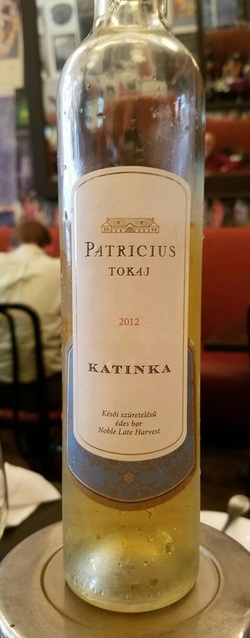 We started with an aperitif, Patricius Tokaj Late Harvest Katinka 2012. Made with Furmint, Yellow Muscat and a touch of Zéta from selected bunches of over-ripened and partly botrytized berries, this wine was beautifully balanced with acidity and sweetness. The color was pale gold with lovely aromas of apricot, caramel, grapefruit and floral notes which flowed onto the palate. The finish was long with notes of vanilla, orange and honey. The wine was paired with a spicy appetizer, showing off how well it complements hot and spicy food. Alcohol: 12% Price: $24.99 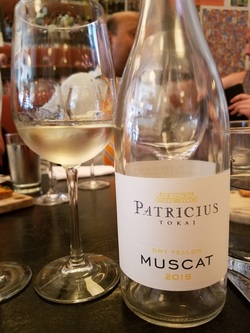 The next pour was Patricius Tokaj Dry Muscat 2015. The color was straw with citrus and floral on the nose. It was very aromatic with a light fruity flavor but definitely dry. Again, this is another beautifully balanced wine showing cream, pear and grass on the finish. It paired well with the Smoked Salmon appetizer. Alcohol: 11.5% Price: $14.99 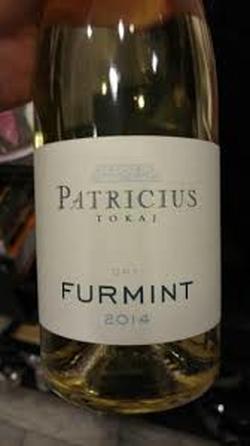 Patricius Tokaj Dry Furmint 2014 was served with the Entrée. Furmint is one of the oldest grape varieties in Hungary and runs the gamut from dry to sweet. Again, this was another wine that was intensely aromatic, but light on the palate. It was a bouquet of citrus, honey, apples and spice. Butter, roasted nuts, pear and a touch of lemon zest on the finish, plus perfect acidity, made this an exceptional dry wine. It was enjoyable to drink and complemented the Crispy Mountain Trout. Alcohol: 12.5% Price: $14.99 As we segued onto dessert, we were served Patricius Tokaj 5 Puttonyos ASZÚ 2004. A puttonyo is the traditional hod (bag) that is used as a measure for the sweet grape paste made from macerated botrytised grapes. The higher the number is, the sweeter the wine, with 6 being the sweetest. Made with Furmint, the color was between apricot and amber with heady aromas of honey, peach and flowers. This is a very rich and sweet wine, yet it is impeccably balanced with hints of lemon and spice. Heavenly! Alcohol: 11% Price: $44.99 The last pour made me want to pack my bags and fly to Hungary. We were treated to a taste of Patricius Tokaj 5 Eszencia 2000. Eszencia is grape syrup that is made from a miniscule amount of free-run juice from the botrytised grapes which are used to make Aszú paste. Due to the high sugar content, these wines ferment in casks for over 9 years. It is Patricius’s most highly prized wine. It is not sold commercially, but it is sold at auction and goes for $1000 a bottle or more. The color was deep amber with enticing aromas of floral, honey and a hint of spice. The palate offered an amazing sweetness with a hint of lemon. I must admit that it is almost indescribable. I savored every sip. Alcohol: 2% So, if you’re looking to broaden your palate and want to try some exciting wines, then I have just three words for you.
Hungarian wines…delicious! Cheers! Penina 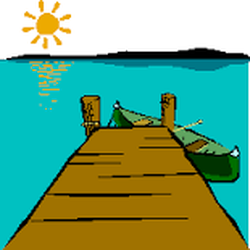 It was a great weekend, even though it was incredibly hot outside. We cooled off in the nearest body of water as often as possible and stayed hydrated with water during the day. However, we treated ourselves to aperitifs and wine with dinner at night. By the way, the strawberry was scrumptiously infused with the Lillet and heavenly to eat! I reviewed this wine a few days ago. http://thewineknitter.com/1/post/2016/07/day-489.html The other evening I opened a bottle of 2011 D'Isanto & D'Isanto I Balzini Black Label Colli della Toscana Centrale IGT. I have written about this wine on more than one occasion on my blog. My last review of it was this past November. “Made with a blend of Cabernet Sauvignon and Merlot, this bold wine was the color of deep purple. Aromas of dark berries, spice and cocoa were present. A quick sip and swirl upon opening, told me this was going to be a treat. The wine had a rich mouthfeel with concentrated berries, dark cherry, plum, licorice and dark chocolate on the palate. As the wine opened over the course of the evening the flavors became more intense. The tannins were soft and the finish was long with cherry and pepper lingering.” This vintage is very consistent, having had a few bottles of the 2011 over the course of 2 years. You can read more about their White and Red Label on previous posts: Day 347 9/22/15 and Day 230 3/19/15. http://www.ibalzini.it It’s time to head outdoors and enjoy a swim!
Enjoy your Sunday! Cheers! Penina It was the perfect evening to sit out on the deck, watch the sunset, share stories and drink wine. There was a delightful breeze and NO humidity! 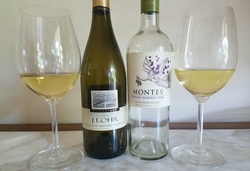 The empty bottles and the last few mouthfuls of some nice wine… 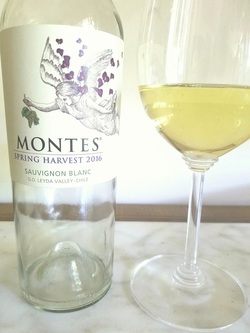 We started with Montes Spring Harvest 2016 Sauvignon Blanc from the cool coastal region of Leyda Valley, Chile. The grapes are handpicked one month early, making the wine available 2 months earlier than other wines of this variety. Aurelio Montes, the chief winemaker, says this wine is “ideal to celebrate the beginning of the spring season.” The color was light yellow with a green hue. Aromas of citrus, grapefruit, mango and a hint of herbs tickled the nose. The palate offered citrus, grapefruit, lemon zest and hints of pepper. A bitter edge followed at the finish, making this a most delightful experience. Full-bodied with racy acidity makes this wine a perfect accompaniment to most food. Alcohol: 12.5% Price range: $13 to $16 http://www.monteswines.com For our dinner, I made pan seared Halibut with charred corn, mint, scallions, cherry tomatoes and fresh lime juice. A side of pear, walnut and Gorgonzola stuffed ravioli drizzled with balsamic & fig dressing, and homemade country French bread completed the meal. 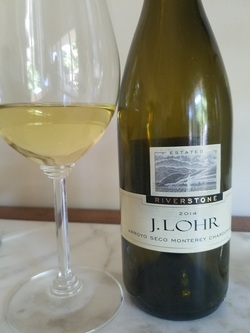 We chose a 2014 J. Lohr Riverstone Chardonnay from Arroyo Seco Monterey, Central Coast, CA to drink with our dinner. This is a “tried and true” chardonnay. I reviewed the 2014 vintage in November. The color was pale yellow with aromas of peach, strawberry, honeysuckle and nuts. The aromas carried over onto the palate with oak and a smooth buttery feel on the finish. Alcohol: 13.5% Price is approximately $14 It’s time for a swim.
Happy Thursday! Cheers! Penina In case you didn’t read my last post, it was about El Ron Prohibido Habanero rum from Mexico. In the post I explained the aging process using the traditional 12-year solera system. You might want to scroll down to the previous post and read about it prior to reading my tasting notes. We finally opened the bottle last night, which is reminiscent of a pirate’s jug of rum, except this bottle is all glass. The bottle has a very “old world” look to it that makes it very inviting. The best way to drink this rum is “straight”, otherwise the subtle flavors will be lost. The color is dark amber with a sweet aroma that reminded me of sherry and port. Dry fruits, prunes and vanilla were present on the nose followed by hints of raisin. The palate offered honey, plum, oak and raisins. The rum had a bittersweet finish of vanilla and espresso beans that lingered on the palate. Overall, I found the process of making the rum and its packaging more intriguing than the rum itself. Alcohol: 40%  I have a busy week ahead, with my main goal of staying cool and hydrated! Have a great Monday! Cheers! Penina |
Categories
All
|

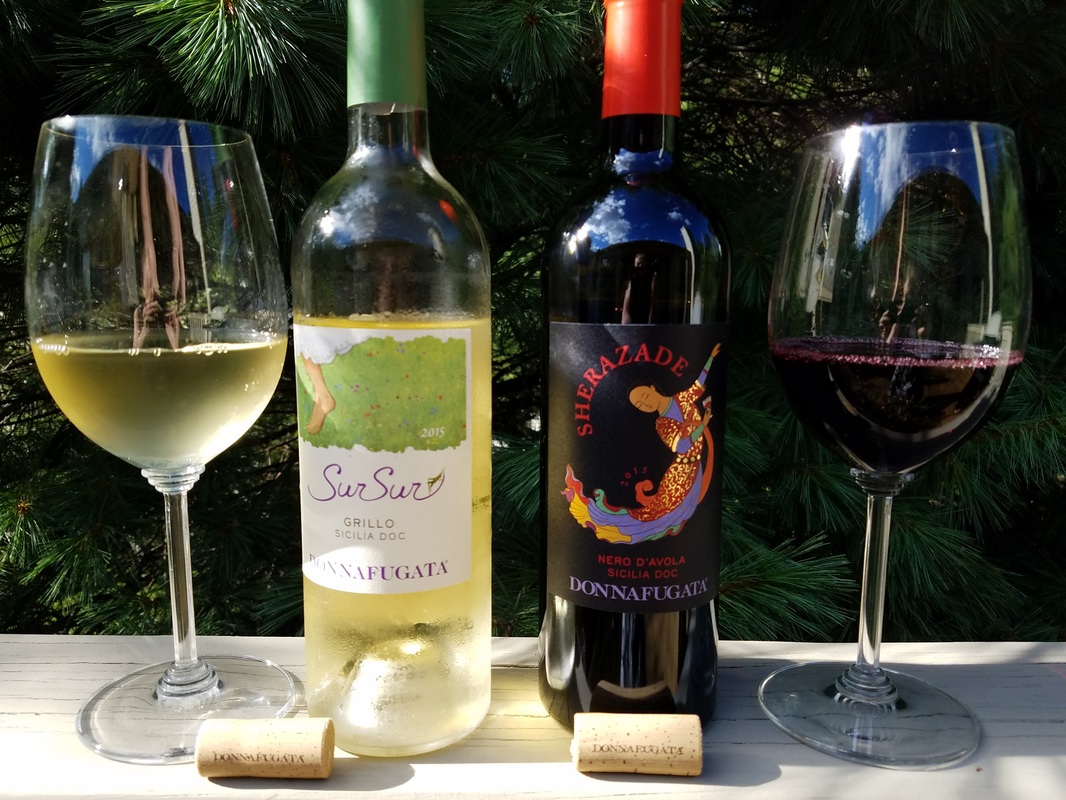
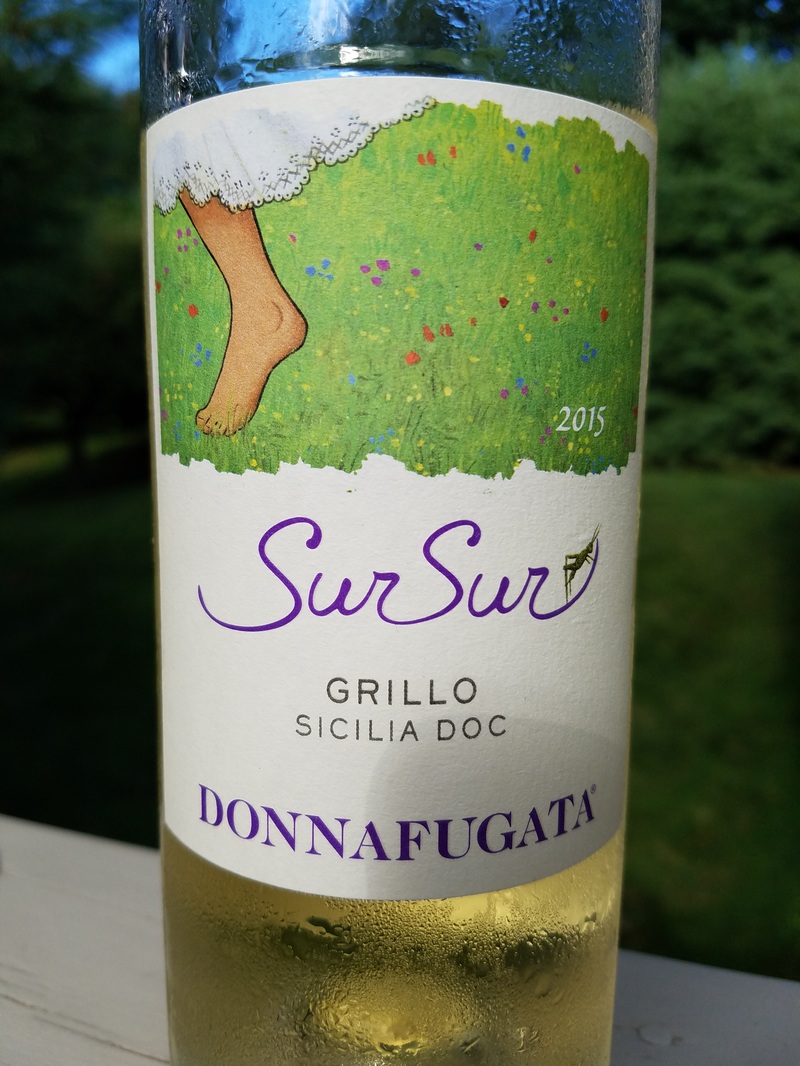
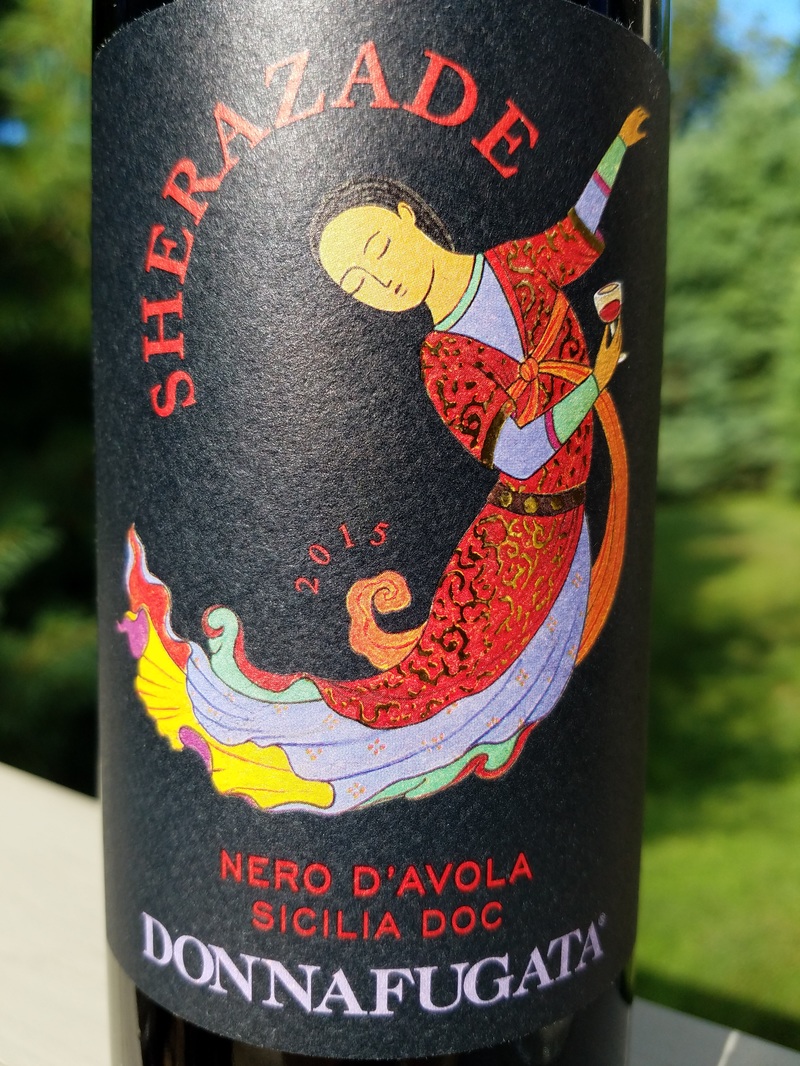
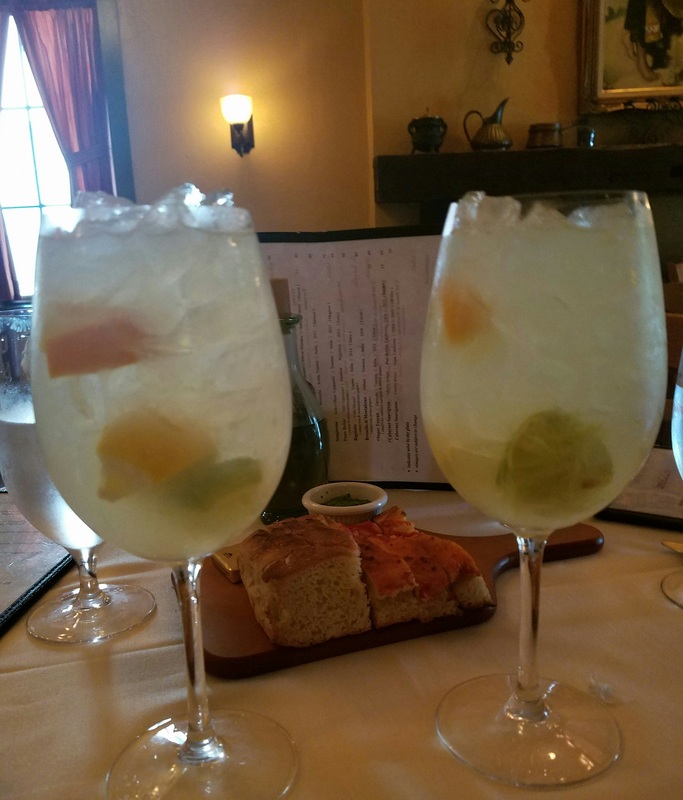
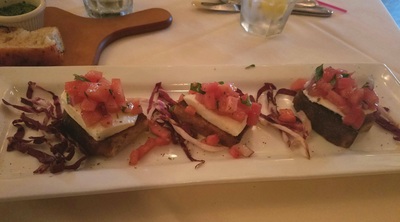
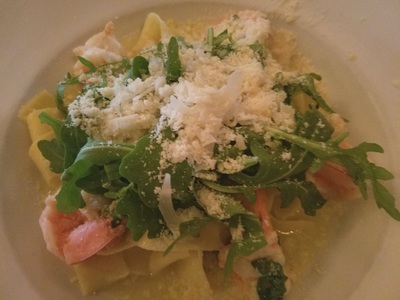
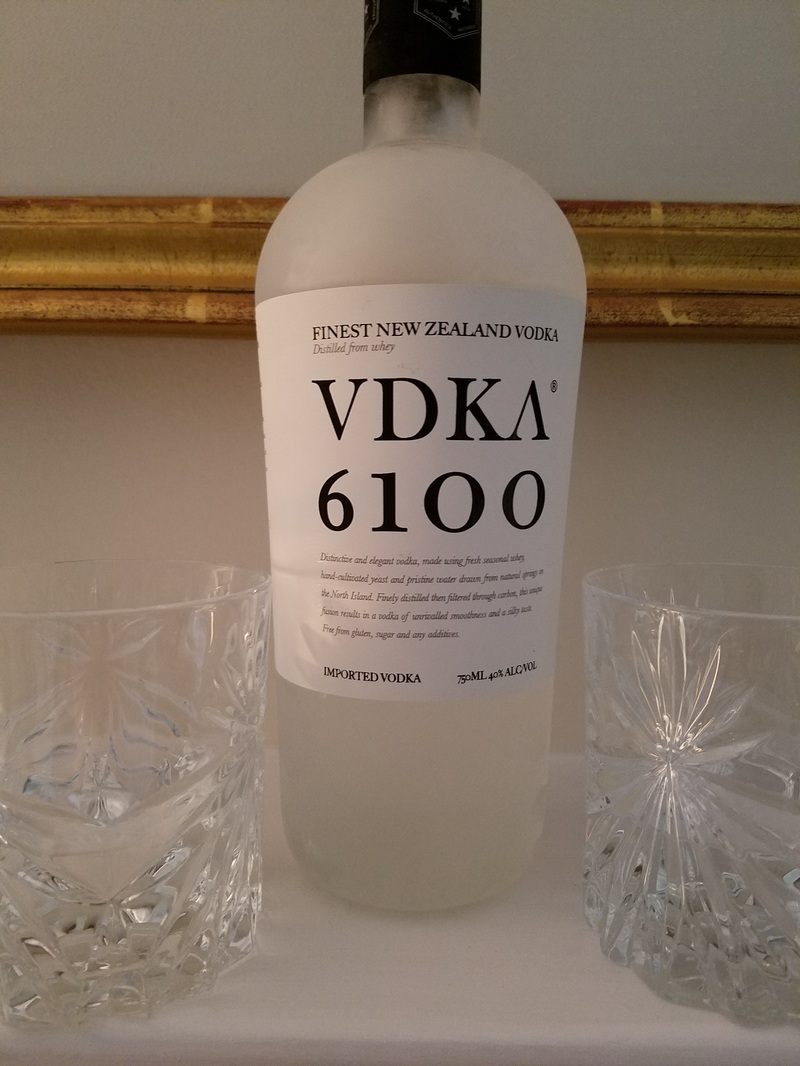
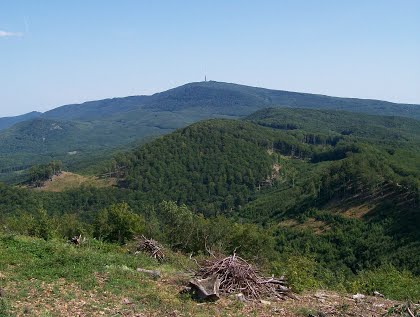
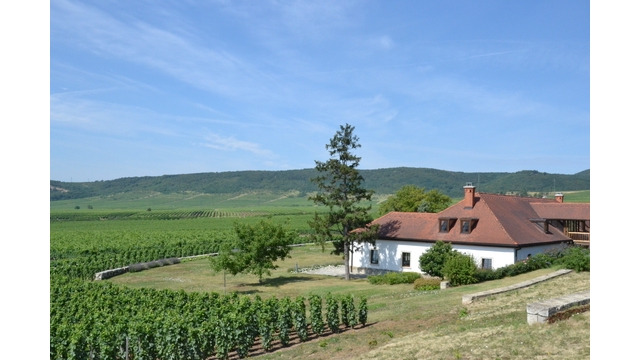
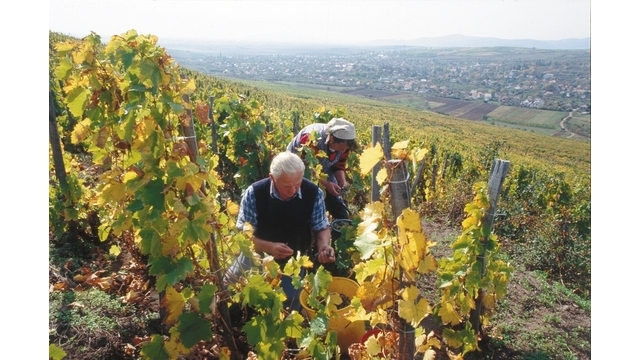
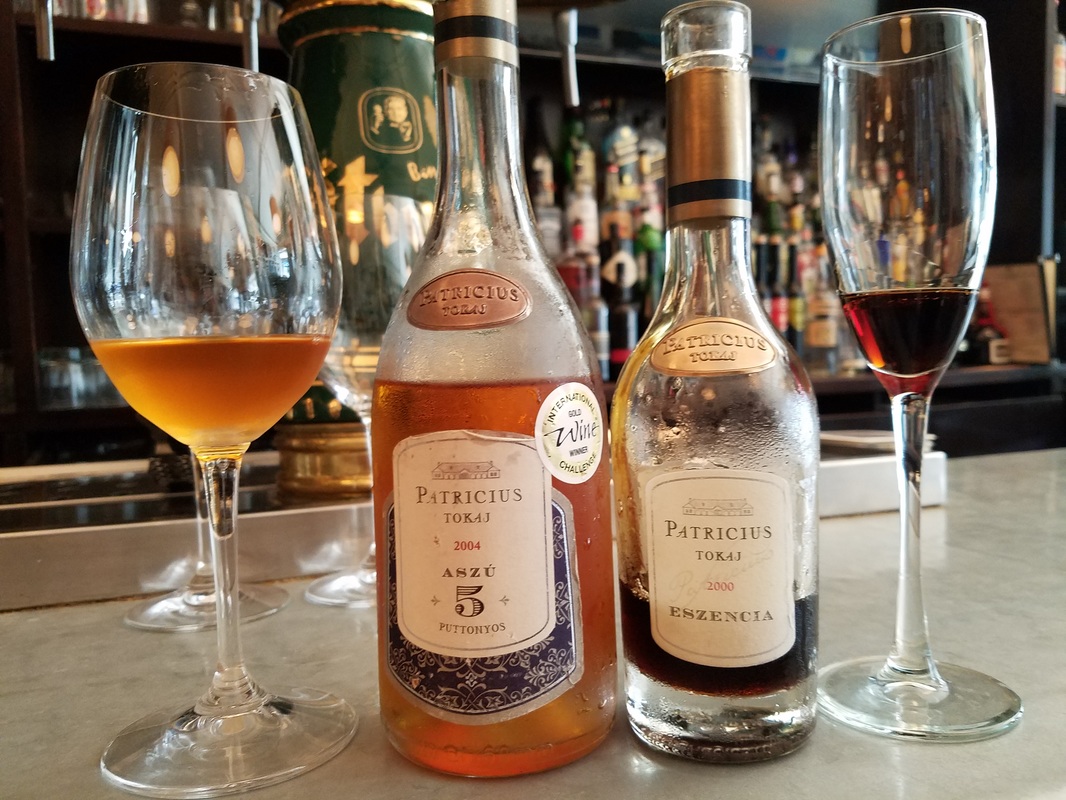


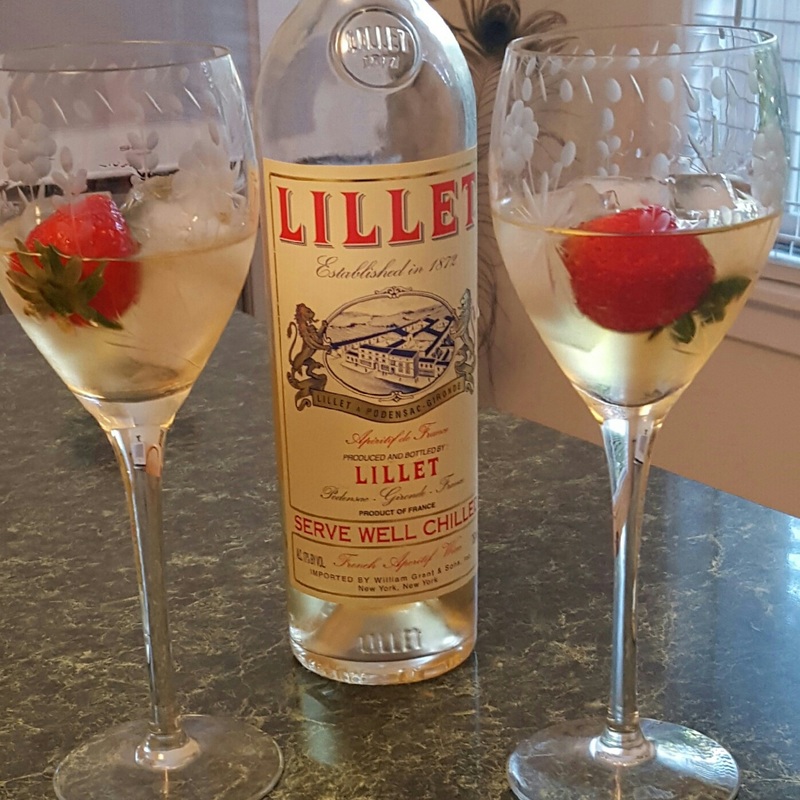
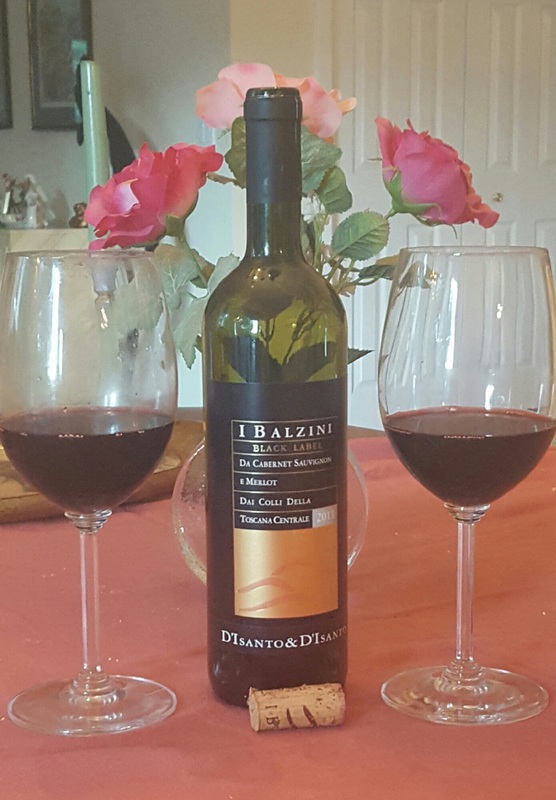
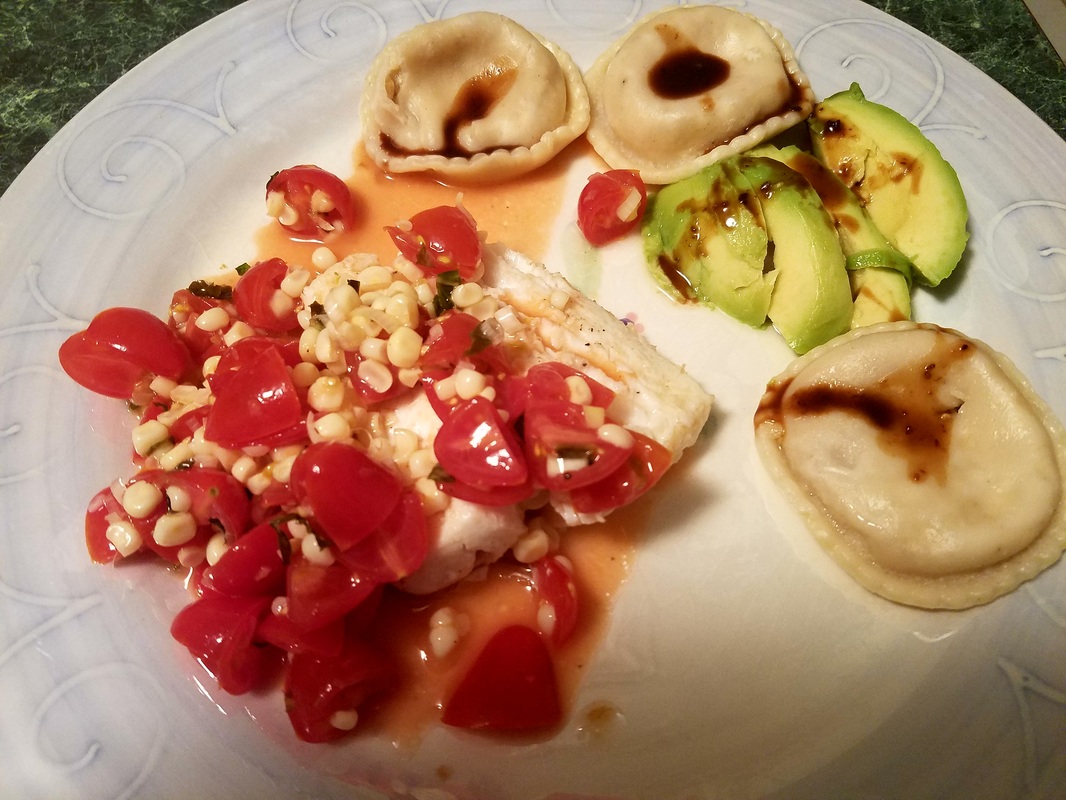
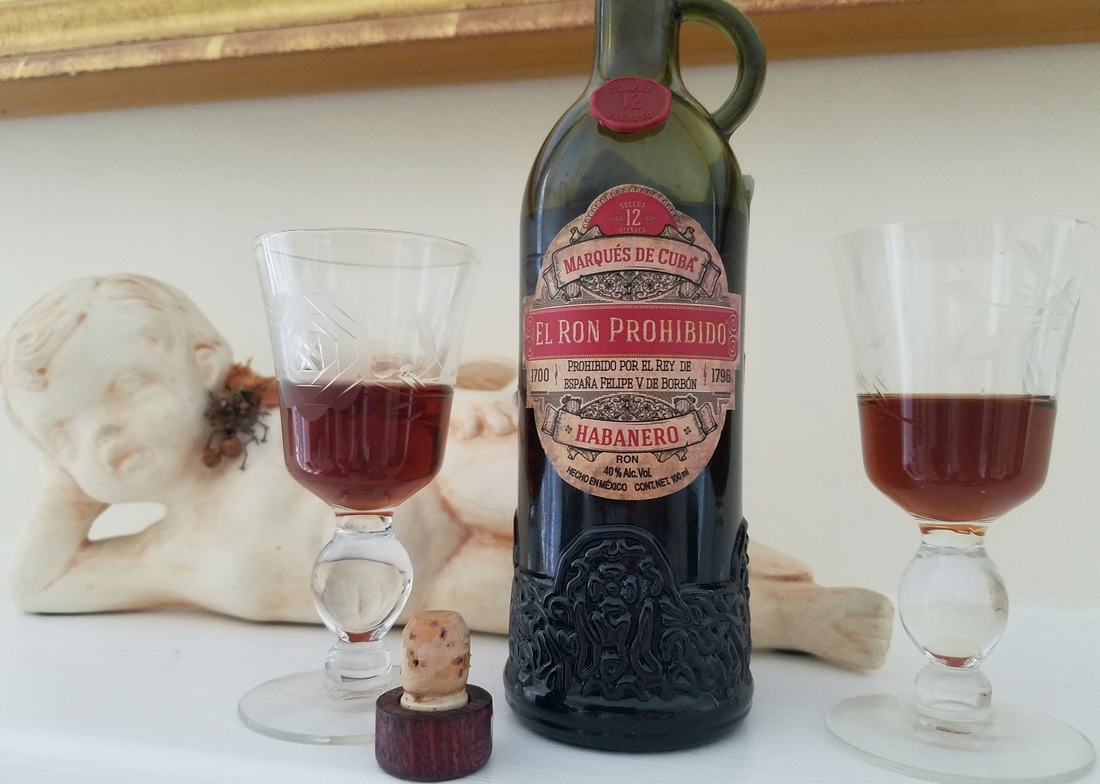
 RSS Feed
RSS Feed